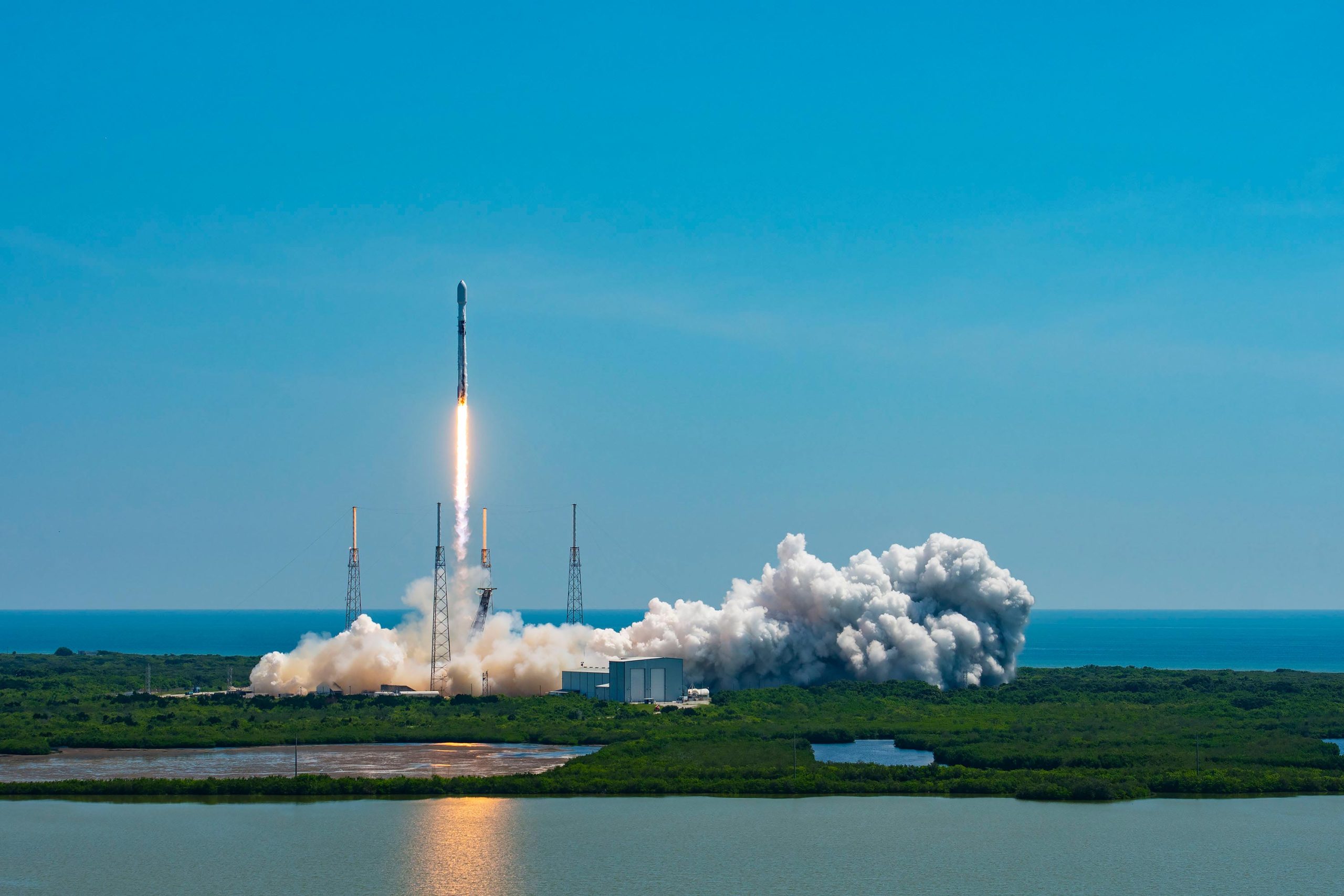Euclid Space Telescope Sets Off on Mission to Unravel the Mysteries of the Dark Universe

On
Following launch and separation from the rocket,
“The successful launch of Euclid marks the beginning of a new scientific endeavor to help us answer one of the most compelling questions of modern science,” says
On
“The
The
Euclid will observe billions of galaxies out to 10 billion light-years to create the largest, most accurate 3D map of the Universe, with the third dimension representing time itself. This detailed chart of the shape, position, and movement of galaxies will reveal how matter is distributed across immense distances and how the expansion of the Universe has evolved over cosmic history, enabling astronomers to infer the properties of dark energy and dark matter. This will help theorists to improve our understanding of the role of gravity and pin down the nature of these enigmatic entities.
“Today we celebrate the successful launch of a ground-breaking mission that places Europe at the forefront of cosmological studies,” says Carole Mundell, ESA’s Director of Science. “If we want to understand the Universe we live in, we need to uncover the nature of dark matter and dark energy and understand the role they played in shaping our cosmos. To address these fundamental questions, Euclid will deliver the most detailed map of the extra-galactic sky. This inestimable wealth of data will also enable the scientific community to investigate many other aspects of astronomy, for many years to come.”
ESA’s Euclid mission is designed to uncover the properties and effects of the elusive dark matter and dark energy, entities believed to be dominating the universe’s composition but remain undetected directly. Euclid will create a 3D map of the Universe, utilizing time as its third dimension, by observing billions of galaxies up to 10 billion light-years away. This extensive mapping will help scientists chart the position and velocity of galaxies across vast distances and through cosmic history, shedding light on the Universe’s expansion over time. Credit: ESA
To achieve its ambitious scientific goal, Euclid is equipped with a 1.2 m reflecting telescope that feeds the two innovative scientific instruments: VIS, which takes very sharp images of galaxies over a large fraction of the sky, and NISP, which can analyze galaxies’ infrared light by wavelength to accurately establish their distance.
The spacecraft and communications will be controlled from ESOC. To cope with the vast amounts of data Euclid will acquire, ESA’s Estrack network of deep space antennas has been upgraded. These data will be analyzed by the Euclid Consortium – a group of more than 2000 scientists from more than 300 institutes across Europe, the US, Canada, and Japan.
As for other ESA missions, spacecraft data arrive at ESA’s European Space Operations Centre (ESOC) in Germany, via ground stations around the world.Raw data are transmitted to the European Space Astronomy Centre (ESAC) in Spain. From ESAC the data are distributed to the processing centers of the Science Ground Segment of the Euclid Consortium, based in a number of European states and the USA.The Euclid Consortium (EC) is an organization that brings together more than 2000 researchers in theoretical physics, astrophysics and space astronomy, and engineers, technicians, and administrative staff. It was selected by ESA as the single official scientific consortium having the responsibility of the scientific instruments, the production of the data and of leading the scientific exploitation of the mission until completion.The EC Science Ground Segment is responsible for the design, development tests, integration, and operation of the data processing tools, pipelines, and data centers. The processed data products include calibrated images and spectra, catalogs of scientific measurements, and documentation.At regular intervals, the treasure trove of Euclid’s processed data will be made publicly available to the community via the Astronomy Science Archive at ESAC. It is from ESAC that science operations are planned, and where all the scientific data produced by an ESA mission are archived and made accessible to the world.Credit: ESA
As the mission progresses, Euclid’s treasure trove of data will be released with a yearly cadence and will be accessible to the global scientific community via the Science Archive hosted at ESA’s European Space Astronomy Centre in Spain.
“This is a great moment for science, one that we have long been looking forward to: the launch of Euclid, on a mission to decipher the puzzle of dark matter and dark energy,” says René Laureijs, ESA’s Euclid Project Scientist. “The big mystery of the fundamental constituents of the Universe is staring us in the face, offering a formidable challenge. Thanks to its advanced telescope and powerful scientific instrumentation, Euclid is poised to help us unravel this mystery.”
ESA’s Euclid will orbit the second Lagrange point (L2), 1.5 million kilometers from Earth in the opposite direction to the Sun. L2 is an equilibrium point of the Sun-Earth system that follows Earth around the Sun.In its orbit at L2, Euclid’s sunshield can always block the light from the Sun, Earth, and Moon while pointing its telescope towards deep space, ensuring a high level of stability for its instruments.At L2, Euclid joins ESA’s Gaia mission and the ESA/NASA/CSA James Webb Space Telescope, which are also orbiting around this equilibrium point, each following well-separated trajectories.Credit: ESA
In the next four weeks, Euclid will travel towards Sun-Earth Lagrange point 2, an equilibrium point of the Sun-Earth system located 1.5 million km from Earth (about four times the Earth-Moon distance) in the direction opposite from the Sun. There, Euclid will be maneuvered into orbit around this point and mission controllers will start the activities to verify all the functions of the spacecraft, check out the telescope and finally turn on the scientific instruments.
Scientists and engineers will then be engaged in an intense two-month phase of testing and calibrating Euclid’s scientific instruments and preparing for routine observations. Over six years Euclid will survey one-third of the sky with unprecedented accuracy and sensitivity.
ESA’s Euclid mission is a highly ambitious project undertaken by the European Space Agency (ESA) to investigate and understand the nature of two enigmatic components of our Universe: dark matter and dark energy. Launched on July 1, 2023, the spacecraft will observe billions of galaxies up to 10 billion light-years away to construct the most accurate 3D map of the Universe ever made. Credit: ESA
Euclid is a European mission, built and operated by ESA, with contributions from NASA. The Euclid Consortium is responsible for providing the scientific instruments and scientific data analysis. ESA selected Thales Alenia Space as prime contractor for the construction of the satellite and its service module, with Airbus Defence and Space chosen to develop the payload module, including the telescope. NASA provided the detectors of the Near-Infrared Spectrometer and Photometer, NISP. Euclid is a medium-class mission in ESA’s Cosmic Vision Programme.




